Words: 1425 | Estimated Reading Time: 8 minutes | Views: 2665
Akabane is not representative of Tokyo’s “center,” but thanks to its advantageous transport hub position and an ongoing east–west redevelopment program, it is entering a new cycle of urban renewal. For investors seeking stable rental income and mid‑term capital appreciation, Akabane presents a distinctive, cultivable value profile — combining spending power of traditional shopping streets and dining culture with upward pressure driven by large‑scale redevelopment that can reprice demographics and land values.
From North Tokyo’s gateway to a neighborhood in renewal
Akabane sits at the core of Kita Ward and has long been referred to as Tokyo’s “Northern Gateway”. Multiple lines converge here — JR Utsunomiya Line, Takasaki Line, Keihin‑Tōhoku Line, Shōnan‑Shinjuku Line, Saikyō Line — giving Akabane a natural advantage for commuting and urban connectivity: roughly 8 minutes to Ikebukuro, 14 minutes to Shinjuku, 10 minutes to Ueno and about 16 minutes to Tokyo Station on regular rapid services. This semi‑central position provides a stable commuter base while attracting through‑traffic from nearby areas (such as Urawa and Ōmiya) and neighboring prefectures, creating a mixed market with different daytime and nighttime rhythms.
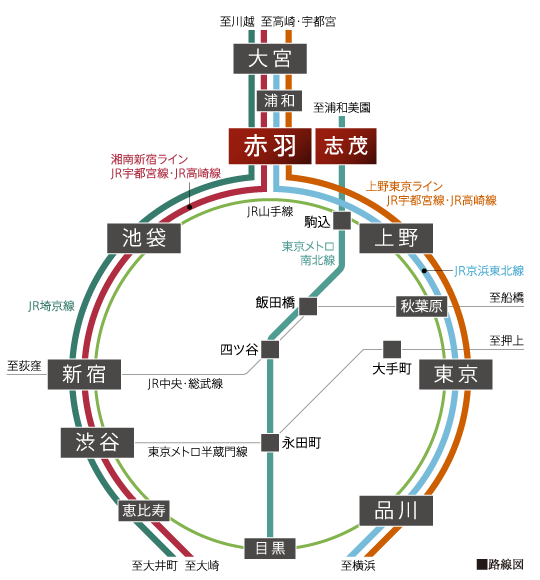
In urban form, Akabane shows a clear east–west zonal character: the east exit is dominated by shopping streets and dining areas (notably 1‑ban‑gai and LaLa Garden) and a high‑density commercial environment where spending concentrate; the west exit features slopes and residential landscapes with numerous UR properties — UR (Urban Renaissance Agency) — where the population skews older and more family‑oriented. The long‑standing downtown (下町 shitamachi) culture provides resident stickiness and frequent small‑ticket spending, but also brings challenges of aging buildings and the need to upgrade local facilities.
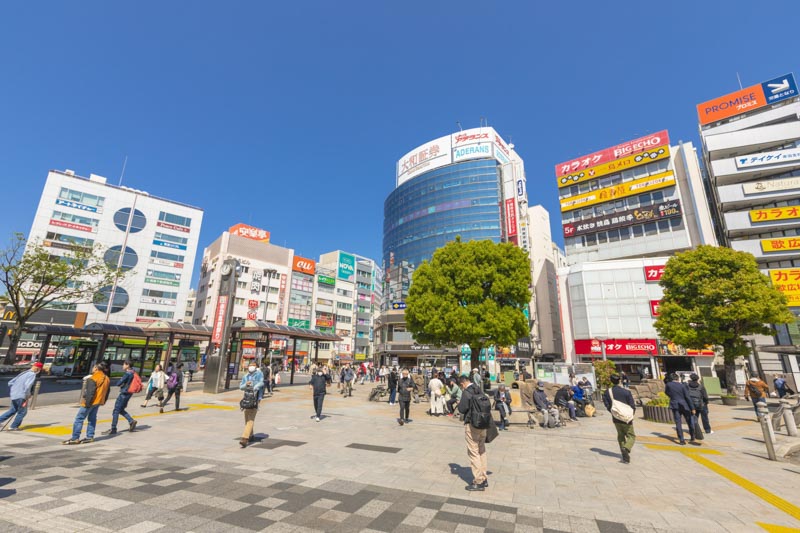
Redevelopment progress - Akabanedai Gateway Plan
Recent urban renewal in Akabane is represented by the “Akabanedai Gateway Plan” (west exit) and the Akabane 1‑chome district redevelopment (east exit), showing complementary redevelopment logic on both sides.
The west exit Akabanedai Gateway Plan addresses the elevation difference between the Musashino terrace and adjacent lowlands, aiming to improve pedestrian and barrier‑free circulation. The plan includes a 29‑story above‑ground residential tower with two basement levels and several low‑rise living facilities. It emphasizes about 400 public bicycle parking spaces and the introduction of fresh‑food retail, cafés and community services, with a scheduled completion target in 2029 (construction has already started). This project updates housing supply while delivering value through improved public spaces and circulation.
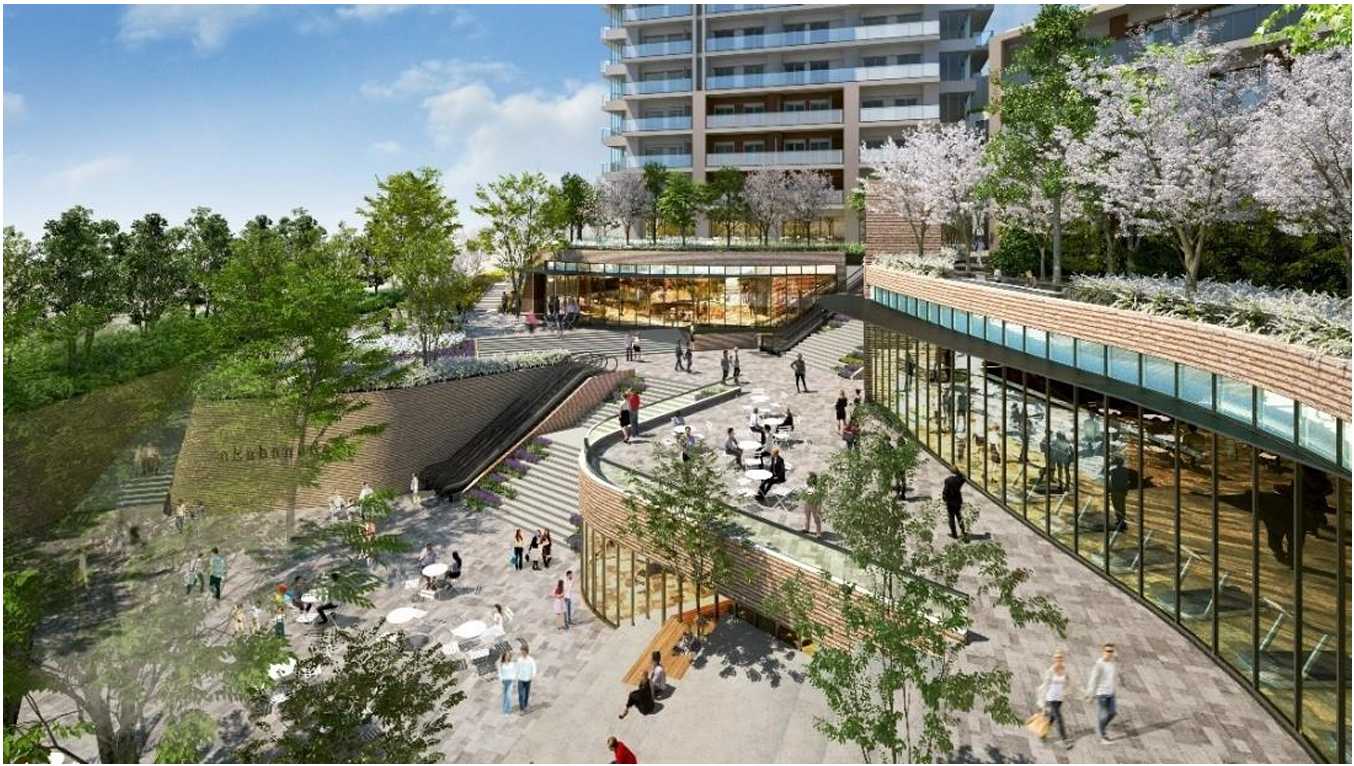
The east exit Akabane 1‑chome redevelopment focuses on prime station‑front land and is advancing in three districts (Areas 1–3). Area 1 plans a mixed‑use tower of 26 stories above ground and one basement level (approx. 108 m), primarily residential with lower‑level retail, parking and cycling facilities; construction is scheduled to start in October 2025 and complete in June 2029 (subject to delay risk). Areas 2 and 3 have entered preparatory organization stages, but specific scale and uses have not been fully disclosed.
Population, land values and rental demand
Demographically, Kita Ward has experienced moderate net growth over the past decade. Despite a temporary dip during the COVID‑19 period, the ward recorded a long‑term net increase of about 20,800 people (roughly a 6.11% ten‑year gain).
This suggests the administrative area that contains Akabane remains attractive to families and commuters, supporting stable demand for residential assets.
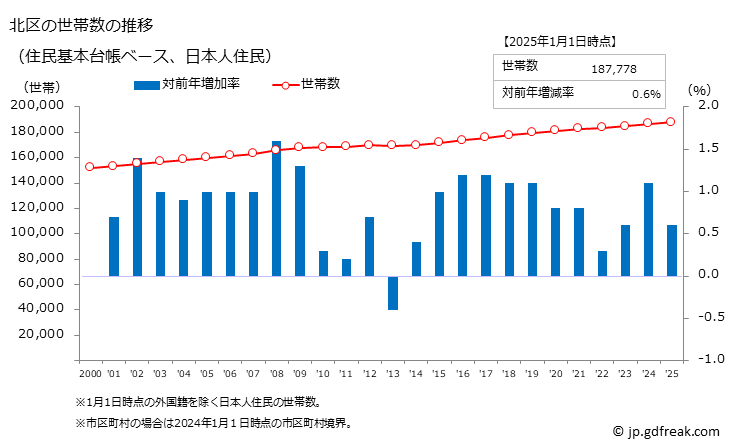
Land price trends are even more telling. Taking the publicly announced commercial land values near Akabane Station east exit as an example: after a dip in 2020–2021 due to the pandemic, values recovered and showed a marked upward move in 2024–2025, rising from about ¥3.98 million/m² to roughly ¥4.70 million/m² — the strongest increase in the ten‑year window.
Residential land values have followed a similar trajectory. The recovery in land benchmarks reflects market pricing of station‑front potential and redevelopment expectations, but it also means acquisition costs are moving higher, so timing and premium assessment before entry become more critical.
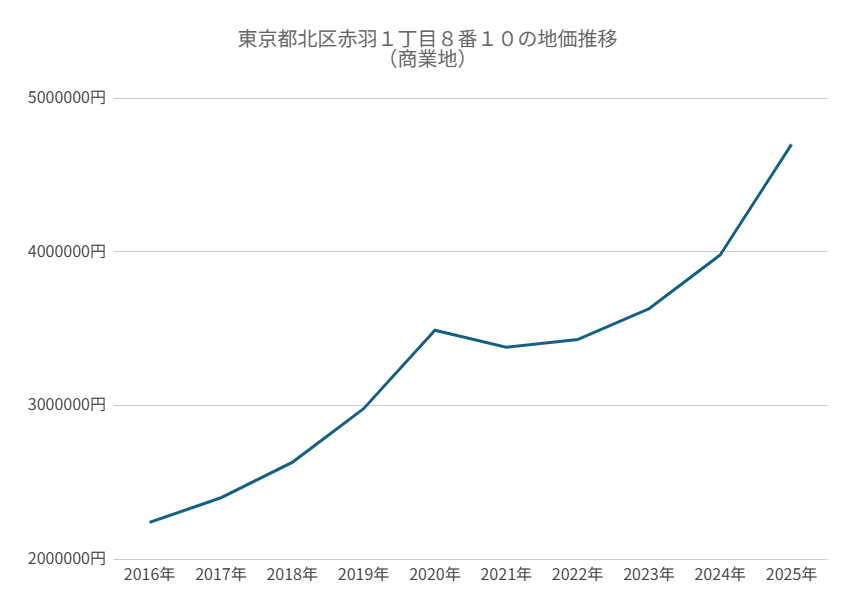
On the leasing side, Akabane’s mixed commercial‑residential profile produces balanced demand. East exit retail and evening dining generate short‑term footfall spillovers, while west exit housing stock redevelopment and nearby campus activity (Toyo University Akabanedai) supply longer‑term leasing volume. According to Urbalytics simulation data, in the three‑year window leading up to completion, yields within a five‑minute walk of Akabane Station core remain in the 5.0%–6.0% range, and high‑quality rental units delivered through redevelopment can see rent growth averaging 10%–15% per year over the first five years after completion.

Investment opportunities:
Breaking down Akabane’s asset opportunities reveals several clear paths.
Small, existing station‑front apartments or shop units remain attractive for cash‑flow investors — they offer low entry thresholds, stable rents and steady footfall;
Early entry around redevelopment perimeters (especially where west‑side terrace circulation is being reconfigured) can capture land repricing and higher tenant premiums over a medium‑term horizon (3–7 years);
Value‑add operational strategies (e.g., converting old shops to small cold‑chain fresh food outlets or delivery‑friendly kitchens) can accelerate returns once footfall normalizes.
Under current market assumptions (moderately rising interest rates and steady domestic capital return to metropolitan areas), acquisitions at 10%–15% below market value are more likely to deliver total returns (rental income plus capital gain) of 12%–18% within five years. Purchasing at a premium in high‑visibility redevelopment zones (for example, plots slated for large commercial facilities) will lengthen payback periods and require stronger operational execution.
Risks and to monitor
Despite the opportunities, investing in Akabane is not without risk. In the short term, two key risks merit close monitoring for investors: first, redevelopment progress and post‑completion supply timing. Although Area 1 at the east exit has published construction and completion schedules, there is evidence of potential delays; schedule slippage would suppress expected land‑price realization and delay rental uplifts. Second, interest rates and financing cost volatility. If macro rates continue upward, risk appetite for lower‑end residential and small commercial assets will shrink, and valuations could be revised downward.
Micro risks by asset type also matter: older wooden low‑rise buildings face natural vacancy and refurbishment costs prior to redevelopment; shopping street tenants will need significant adaptation if consumption patterns shift further toward delivery and online channels; and while large‑scale UR public housing teardown and rebuild can attract younger residents, it may temporarily create localized mismatches in rental supply and demand.
Practical recommendations for investors
Based on the above analysis, we offer three practical paths tailored to different risk profiles:
Conservative: prioritize mature rental apartments or long‑let shop units within 2 km of Akabane Station, target an after‑tax cash yield of 3%–4% and focus on capital preservation;
Opportunistic: seek light‑asset conversion opportunities near redevelopment sites (for example, converting small shops to delivery‑friendly outlets or community fresh‑food points), aiming for rent and valuation uplift within five years;
Strategic: partner with developers or local operators to participate in early cooperative or equity projects related to redevelopment, accepting higher construction and delivery risk in exchange for greater capital‑gain potential.
When choosing transaction timing, combine three quantitative checks:
1) credibility of the published construction/completion timeline (has demolition/construction permitting progressed?);
2) current vacancy and rent levels in the area relative to neighboring districts;
3) sensitivity to financing cost (stress‑test IRR for a 50–100 bps rate increase in the upcoming 6-12 month window).
Urbalytics simulations show that a 75 bps rise in financing rates can reduce the median IRR of a medium‑leverage (LTV 60%) residential project by roughly 3–4 percentage points, so investors should build in adequate margins of safety.
Conclusion: Akabane’s investment positioning and timing window
Akabane sits at the intersection of old‑town functional reconfiguration and rigid transport‑hub demand. For investors seeking suburban Tokyo opportunities that deliver steady rental income today and potential capital uplift through urban redevelopment, Akabane offers a compelling window.
The key is distinguishing time horizons: near‑term success depends on sound operations and location selection; over the medium term (3–7 years), participation in redevelopment and active operational improvement can capture higher premiums.
Ultimately, Akabane resembles arable urban land: the existing lifestyle and commercial fabric are the soil, while redevelopment and institutional support provide irrigation and fertilizer. For patient investors who can align with local development timelines and provide operational capability, there remains considerable upside potential from value reappraisal.
References
[Source: Kita Ward official site “Households and Population” / Information on the Akabane 1‑chome urban redevelopment project, 2024, https://www.city.kita.tokyo.jp/]
[Source: Ministry of Land, Infrastructure, Transport and Tourism — Publicly announced land value data (Kōji Chika), 2024, https://www.land.mlit.go.jp/]
[Source: JR East — Station information (Akabane Station), 2024, https://www.jreast.co.jp/]
[Source: UR Urban Renaissance Agency (overview of urban regeneration and public housing redevelopment), 2023–2024, https://www.ur-net.go.jp/]
[Source: LaLa Garden Akabane (shopping street information and tenant list), 2024, official shopping‑street/related facility information]
Copyright: This article is original content by the author. Please do not reproduce, copy, or quote without permission. For usage requests, please contact the author or this site.



